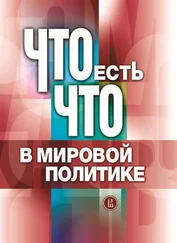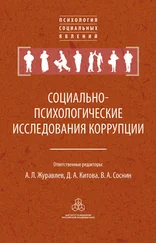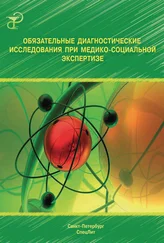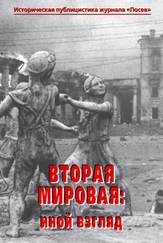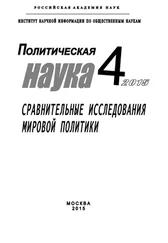Синопсис параллелей между Ев. Фом и НЗ: C. A. Evans, R. L. Webb, and R. A. Wiebe, Nag Hammadi Texts and the Bible: A Synopsis and Index (NTTS 18; Leiden: Brill, 1993), с. 88–144. Среди ученых, считающих, что Ев. Фом зависит от НЗ – W. Schrage, Das Verhältnis des Thomas-Evangeliums zur synoptischen Tradition und zu den koptischen Evangelienübersetzungen (BZNW 29; Berlin: Töpelmann, 1964); C. L. Blomberg, «Tradition and Redaction in the Parables of the Gospel of Thomas», в кн.: The Jesus Tradition Outside the Gospels (ed. D. Wenham; Gospel Perspectives 5; Sheffield: JSOT Press, 1984), с. 177–205; R. E. Brown, «The Gospel of Thomas and St John’s Gospel», NTS 9 (1962–1963): 155–177; B. Dehandschutter, «L’évangile de Thomas comme collection de paroles de Jésus», в кн.: Logia: Les paroles de Jésus – The Sayings of Jesus (ed. J. Delobel; BETL 59; Leuven: Peeters, 1982), с. 507–515; idem, «Recent Research on the Gospel of Thomas», в кн.: The Four Gospels 1992 (ed. F. Van Segbroeck et al.; FS F. Neirynck; BETL 100; Leuven: Peeters, 1992), с. 2257–2262; M. Fieger, Das Thomasevangelium: Einleitung, Kommentar und Systematik (NTAbh 22; Münster: Aschendorff, 1991).
В данном случае перевод дан согласно английскому тексту. В Синодальном переводе оба пассажа идентичны. – Прим. пер .
О влиянии Луки на Евангелие Фомы см.: Meier, Marginal Jew , 1:136; C. M. Tuckett, «Thomas and the Synoptics», NovT 30 (1988): 132–157, особ. с. 146.
Ев. Фом 10 создано под влиянием Лк 12:49; Ев. Фом 14 – под влиянием Лк 10:8–9; Ев. Фом 16 – под влиянием Лк 12:51–53, а также Мф 10:34–39; Ев. Фом 55 и 101 – под влиянием Лк 14:26–27, а также Мф 10:37; Ев. Фом 73–75 – под влиянием Лк 10:2.
См.: R. M. Grant, The Secret Sayings of Jesus (Garden City, N. Y.: Doubleday, 1960), с. 113; B. Gärtner, The Theology of the Gospel according to Thomas (New York: Harper, 1961), с. 26–27, 34, 42–43; E. Haenchen , Die Botschaft des Thomas-Evangeliums (Berlin: Töpelmann, 1961), с. 67–68; R. Kasser, L’Évangile selon Thomas: Présentation et commentaire théologique (Neuchâtel: Delachaux et Niestlé, 1961); Ménard, Évangile selon Thomas; A. Lindemann, «Zur Gleichnisinterpretation im Thomas-Evangelium», ZNW 71 (1980): 214–243; Schrage, Verhältnis des Thomas-Evangeliums , с. 1–11. Схожие заключения сделаны в работах: H. K. McArthur, «The Dependence of the Gospel of Thomas on the Synoptics», ExpTim 71 (1959–1960): 286–287; W. R. Schoedel, «Parables in the Gospel of Thomas», CTM 43 (1972): 548–560; K. R. Snodgrass, «The Gospel of Thomas: A Secondary Gospel», SecCent 7 (1989–1990): 19–38; Tuckett, «Thomas and the Synoptics», с. 157; Meier, Marginal Jew, 1:130–139. Чарльз Карлстон (C. E. Carlston, The Parables of the Triple Tradition [Philadelphia: Fortress, 1975], с. xiii) полагает, что «неоднократное прочтение Евангелия Фомы и многие часы, проведенные с разного рода дополнительной литературой… все же не убедили меня в том, что хоть что-либо из притчевого материала Фомы независимо от синоптических Евангелий». Два недавних исследования подтвердили, что Евангелие Фомы зависит от синоптических Евангелий и не могло быть написано ранее середины II в. См.: S. J. Gathercole, The Composition of the Gospel of Thomas: Original Language and Influences (SNTSMS 151; Cambridge: Cambridge University Press, 2012); M. Goodacre, Thomas and the Gospels: The Case for Thomas’s Familiarity with the Synoptics (Grand Rapids: Eerdmans, 2012).
É. Massaux, The Influence of the Gospel of Saint Matthew on Christian Literature before Saint Irenaeus (ed. A. J. Bellinzoni; 3 vols.; NGS 5.1–3; Macon, Ga.: Mercer University Press, 1990–1993). Нечто близкое к Ев. Фом 22 появляется в 2 Клим 12:2. Второе послание Климента написано, возможно, в середине II в. Климент Александрийский ( Стром 3.13.92) пишет, что это речение из Евангелия египтян .
Об апостоле Фоме в сирийской христианской традиции см.: H.-C. Puech, «Une collection de paroles de Jésus récemment retrouvée: L’Évangile selon Thomas», Comptes Rendus de l’Académie des Inscriptions et Belles-Lettres (Paris: Institut de France, 1957), с. 146–167; Beate Blatz, «The Coptic Gospel of Thomas», в кн.: The New Testament Apocrypha, vol. 1: Gospels and Related Writings (ed. W. Schneemelcher; trans. ed. R. McL. Wilson; rev. ed.; 2 vols.; Philadelphia: Westminster, 1991–1992), с. 110–133; Crossan, Four Other Gospels, с. 9–11; Patterson, Gospel of Thomas and Jesus, с. 118–120; idem, «Understanding the Gospel of Thomas Today», в кн.: Fifth Gospel, ed. Patterson, Robinson, and Bethge, с. 37–40.
О предположении, согласно которому Евангелие Фомы датируется I в., см.: Davies, Gospel of Thomas , с. 146–147; J. D. Crossan, The Historical Jesus: The Life of a Mediterranean Jewish Peasant (San Francisco: HarperSanFrancisco, 1991), с. 427–430; Patterson, Gospel of Thomas and Jesus , с. 118–120; idem, «Understanding the Gospel of Thomas Today», в кн.: Fifth Gospel , ed. Patterson, Robinson, and Bethge, с. 40–45. Редакторы греческих фрагментов Евангелия Фомы (т. е. P.Oxy. 1, 654 и 655) предположили, что оригинальный греческий текст, возможно, датируется 140 г. н. э. – Кроссан, Паттерсон и другие считают эту дату слишком поздней и основанной на бездоказательных и непроверенных предположениях.
О том, что в Евангелии Фомы нет композиционной структуры, см.: Crossan, Four Other Gospels , с. 11–18.
В Диатессароне (что по-гречески означает «по четырем» [Евангелиям]) сплавлены воедино четыре новозаветные Евангелия и добавлен некоторый материал из пятого евангельского источника. См.: S. Hemphill, The Diatessaron of Tatian: A Harmony of the Four Holy Gospels Compiled in the Third Quarter of the Second Century (London: Hodder & Stoughton, 1888); W. L. Petersen, Tatian’s Diatessaron: Its Creation, Dissemination, Significance and History in Scholarship (VCSup 25; Leiden: Brill, 1994); idem, «Tatian’s Diatessaron», в кн.: H. Koester, Ancient Christian Gospels: Their History and Development (Philadelphia: Trinity Press International, 1990), с. 403–430. Последняя статья предлагает очень полезный обзор. Жиль Киспель в своем подробном исследовании отмечает, что, в сравнении с греческими новозаветными Евангелиями, у Евангелия Фомы и Диатессарона Татиана много общих текстуальных вариантов. В сущности, такие варианты представляет собой почти половина речений Евангелия Фомы . См.: G. Quispel, Tatian and the Gospel of Thomas: Studies in the History of the Western Diatessaron (Leiden: Brill, 1975). Татиан (ок. 120–185), ученик Иустина Мученика (ок. 100–165), составил Диатессарон , по-видимому, в Сирии и на сирийском, между 172 и 185 гг. Диатессарон основан прежде всего на Евангелии от Матфея и, возможно, вдохновлен более ранним согласованием синоптических Евангелий, автором которого стал Иустин Мученик.
Читать дальше
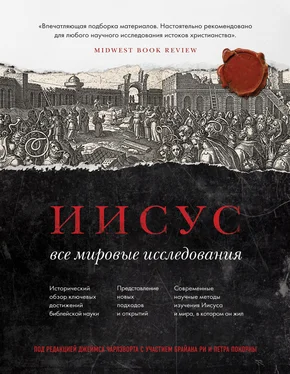
![Коллектив авторов - Что мы думаем о машинах, которые думают [Ведущие мировые ученые об искусственном интеллекте]](/books/31211/kollektiv-avtorov-chto-my-dumaem-o-mashinah-kotorye-thumb.webp)
